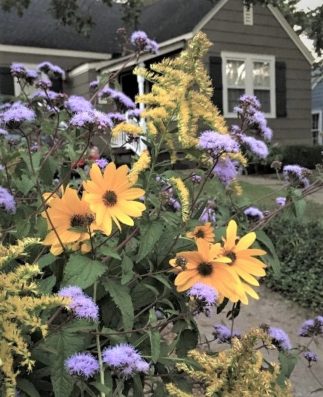Not all states in the Lower 48 are equally endowed with that diversity, however. Some are defined largely by their geographic uniformity, while others have a wide range of varying landscapes, including mountains, deserts, farmland, forests, lakes, and cities. (If you like mountains, this is the highest point in every state.)
Based on a land diversity index, created using data from the U.S. Geological Survey, Louisiana ranks as having the seventh most diverse landscape of the Lower 48 states, with a 76.2% likelihood that two randomly selected parcels would have a different land cover type.
Of Louisiana’s total surface area of 52,378 square miles, forest and woodland is the most common type of land cover, accounting for 37.9% of the state’s area.
| Landscape diversity rank | State | Odds two random land parcels have a different use (%) | Total land area (sq. mi.) |
|---|---|---|---|
| 1 | Texas | 80.2 | 268,596 |
| 2 | Montana | 78.5 | 147,040 |
| 3 | California | 77.9 | 163,695 |
| 4 | Washington | 77.1 | 71,298 |
| 5 | Delaware | 76.6 | 2,489 |
| 6 | Colorado | 76.6 | 104,094 |
| 7 | Louisiana | 76.2 | 52,378 |
| 8 | Maryland | 75.6 | 12,406 |
| 9 | Florida | 74.3 | 65,758 |
| 10 | New Jersey | 73.2 | 8,723 |
| 11 | Idaho | 72.7 | 83,569 |
| 12 | Oregon | 71.2 | 98,379 |
| 13 | North Carolina | 70.0 | 53,819 |
| 14 | Utah | 69.8 | 84,897 |
| 15 | Rhode Island | 69.5 | 1,545 |
| 16 | Oklahoma | 69.5 | 69,899 |
| 17 | Michigan | 68.2 | 96,714 |
| 18 | New Mexico | 68.2 | 121,590 |
| 19 | Wisconsin | 67.9 | 65,496 |
| 20 | Ohio | 66.4 | 44,826 |
| 21 | Massachusetts | 66.3 | 10,554 |
| 22 | Minnesota | 64.2 | 86,936 |
| 23 | South Carolina | 63.9 | 32,020 |
| 24 | New York | 63.6 | 54,555 |
| 25 | Tennessee | 63.2 | 42,144 |
| 26 | Virginia | 63.0 | 42,775 |
| 27 | Wyoming | 62.5 | 97,813 |
| 28 | South Dakota | 62.4 | 77,116 |
| 29 | Connecticut | 61.3 | 5,543 |
| 30 | Kentucky | 61.1 | 40,408 |
| 31 | Georgia | 60.8 | 59,425 |
| 32 | Mississippi | 60.7 | 48,432 |
| 33 | Arkansas | 58.6 | 53,179 |
| 34 | Nebraska | 57.9 | 77,348 |
| 35 | Missouri | 57.7 | 69,707 |
| 36 | Pennsylvania | 57.7 | 46,054 |
| 37 | Alabama | 57.6 | 52,420 |
| 38 | Indiana | 54.3 | 36,420 |
| 39 | Kansas | 53.5 | 82,278 |
| 40 | Arizona | 53.4 | 113,990 |
| 41 | North Dakota | 53.4 | 70,698 |
| 42 | Illinois | 51.1 | 57,914 |
| 43 | Nevada | 43.7 | 110,572 |
| 44 | Vermont | 42.6 | 9,616 |
| 45 | Maine | 39.5 | 35,380 |
| 46 | New Hampshire | 34.5 | 9,349 |
| 47 | West Virginia | 34.4 | 24,230 |
| 48 | Iowa | 33.5 | 56,273 |



